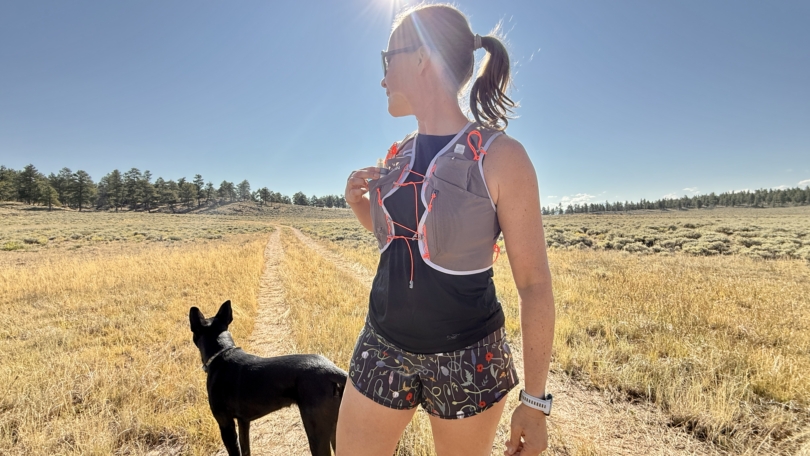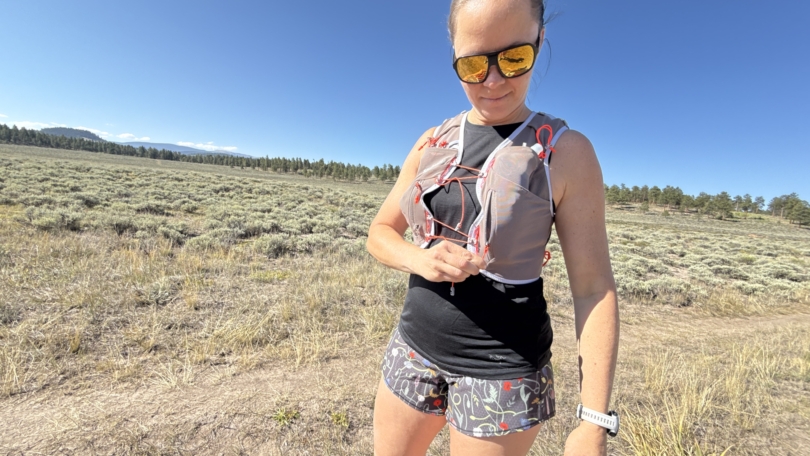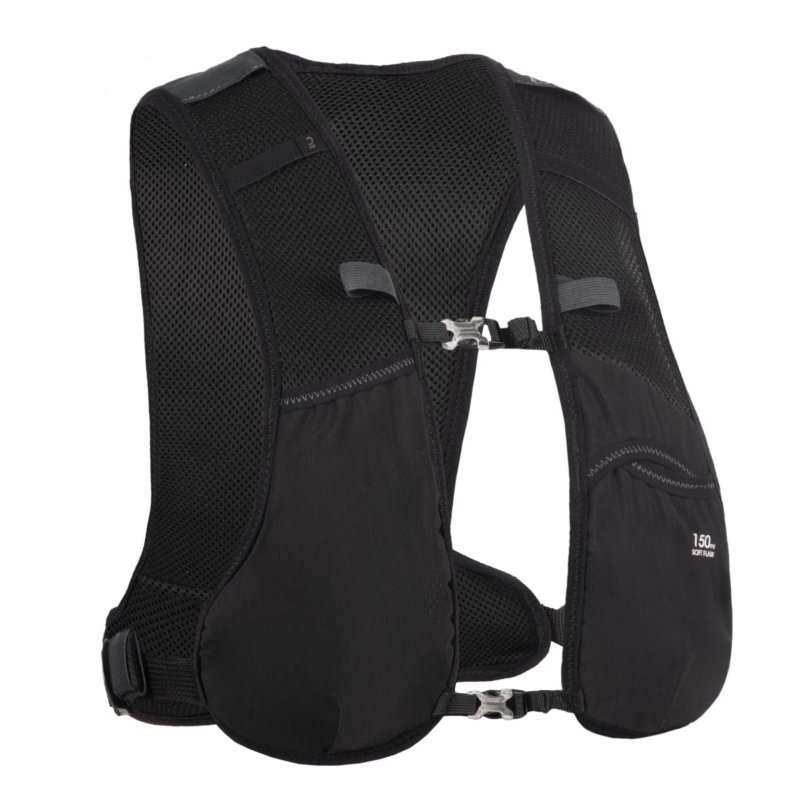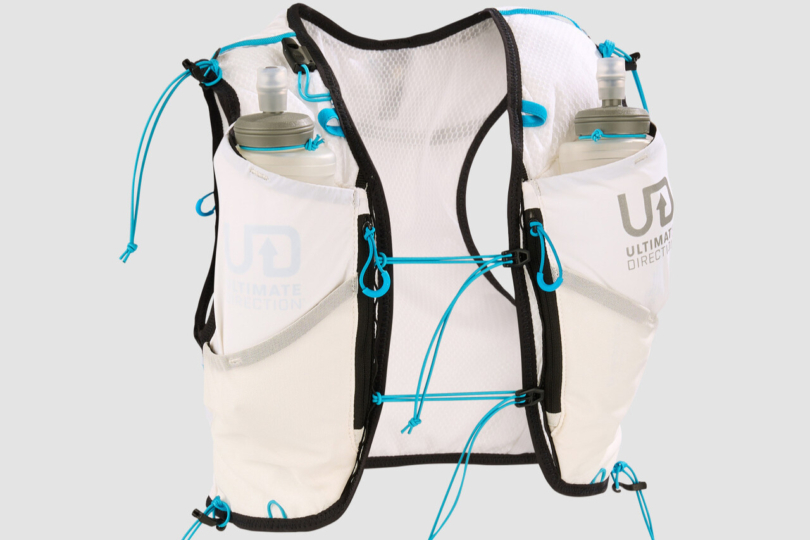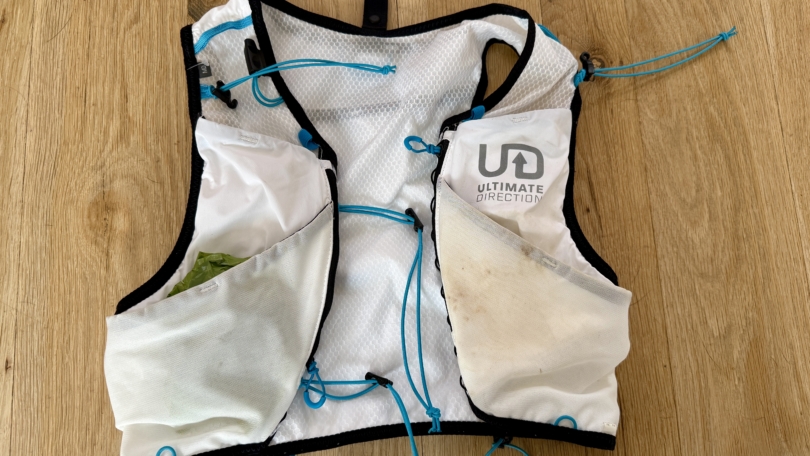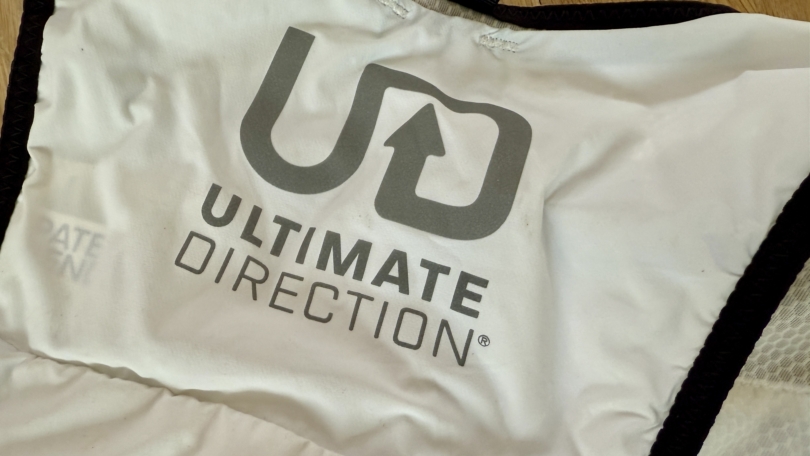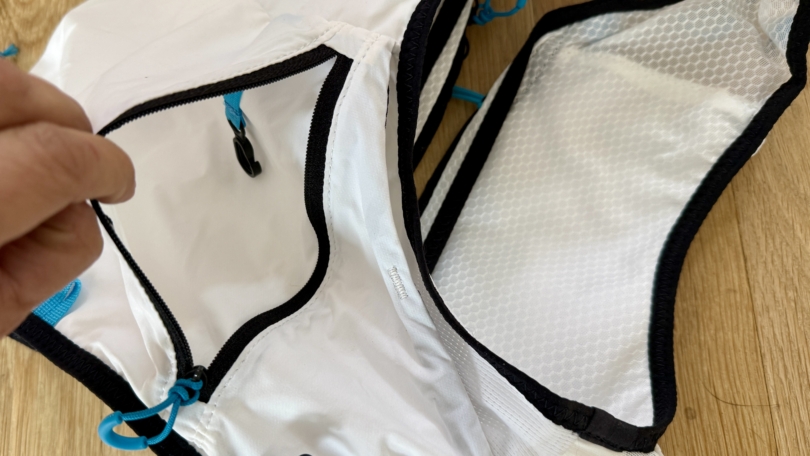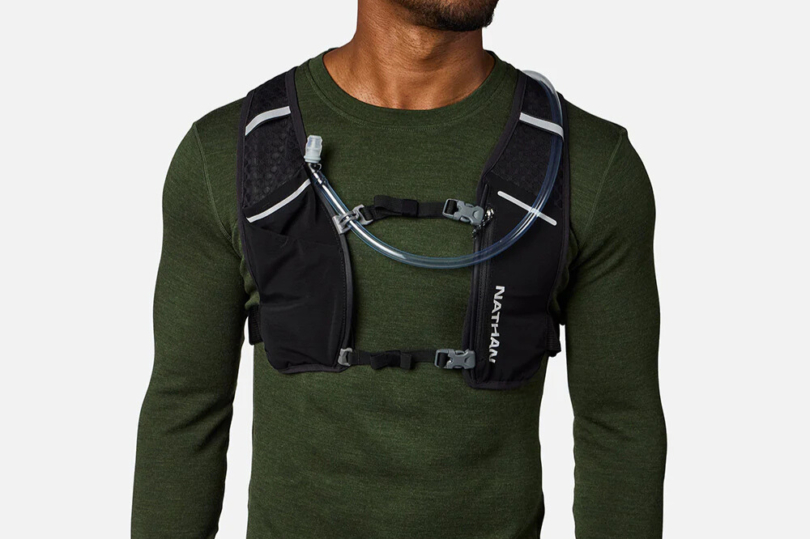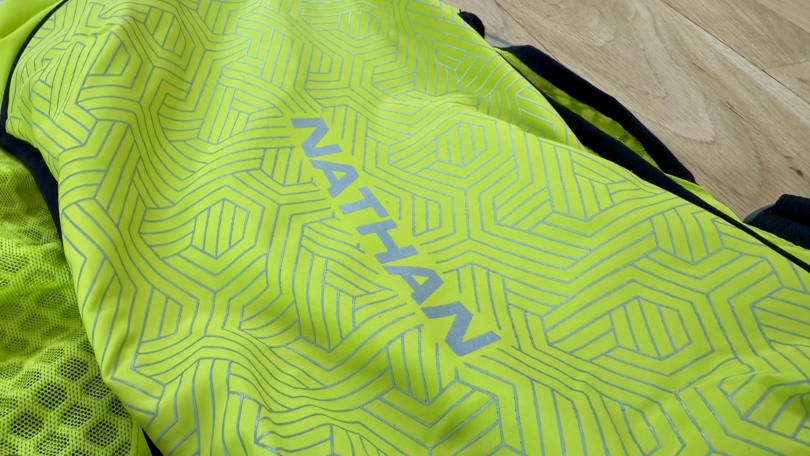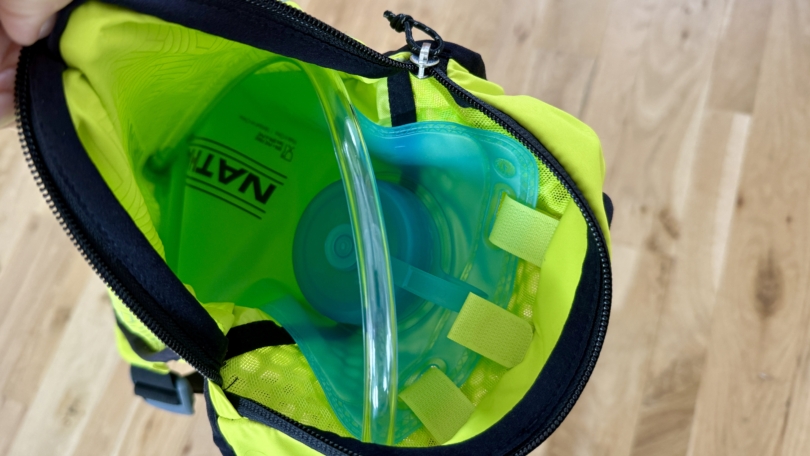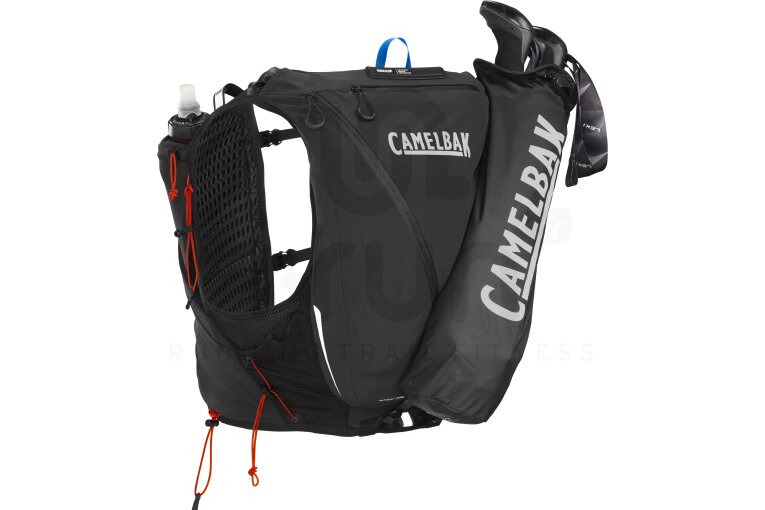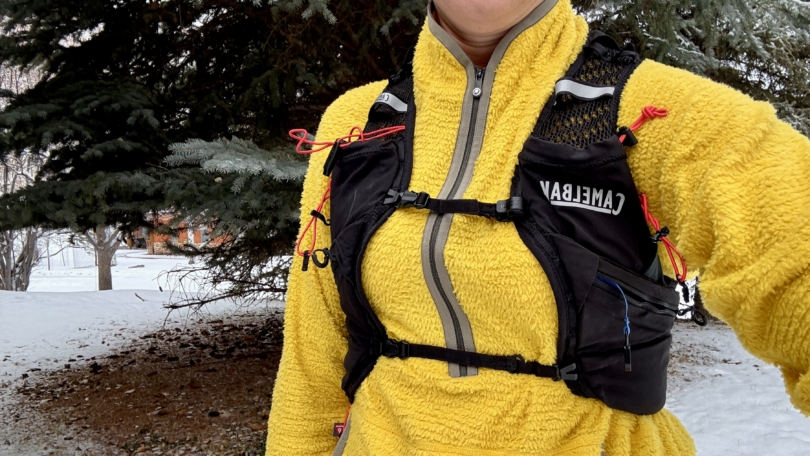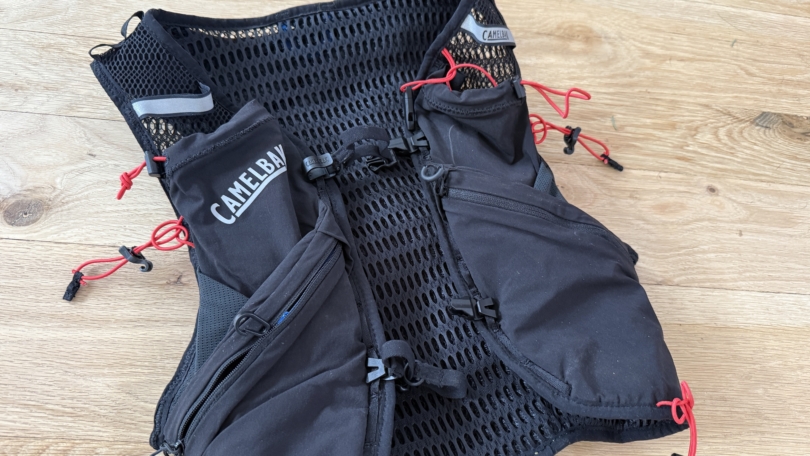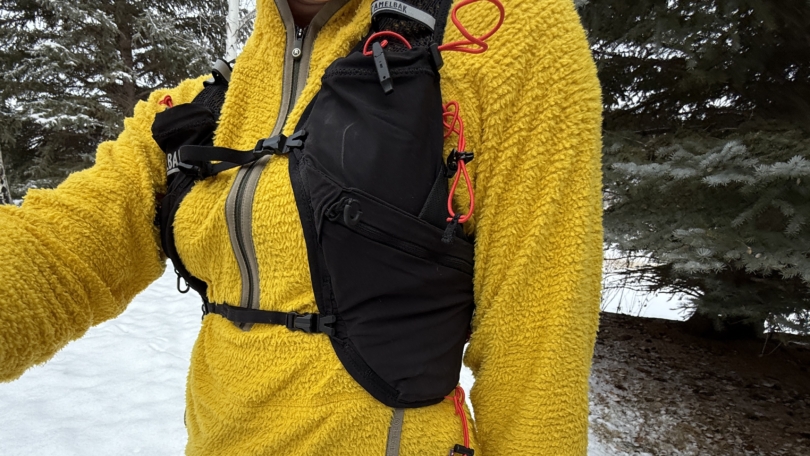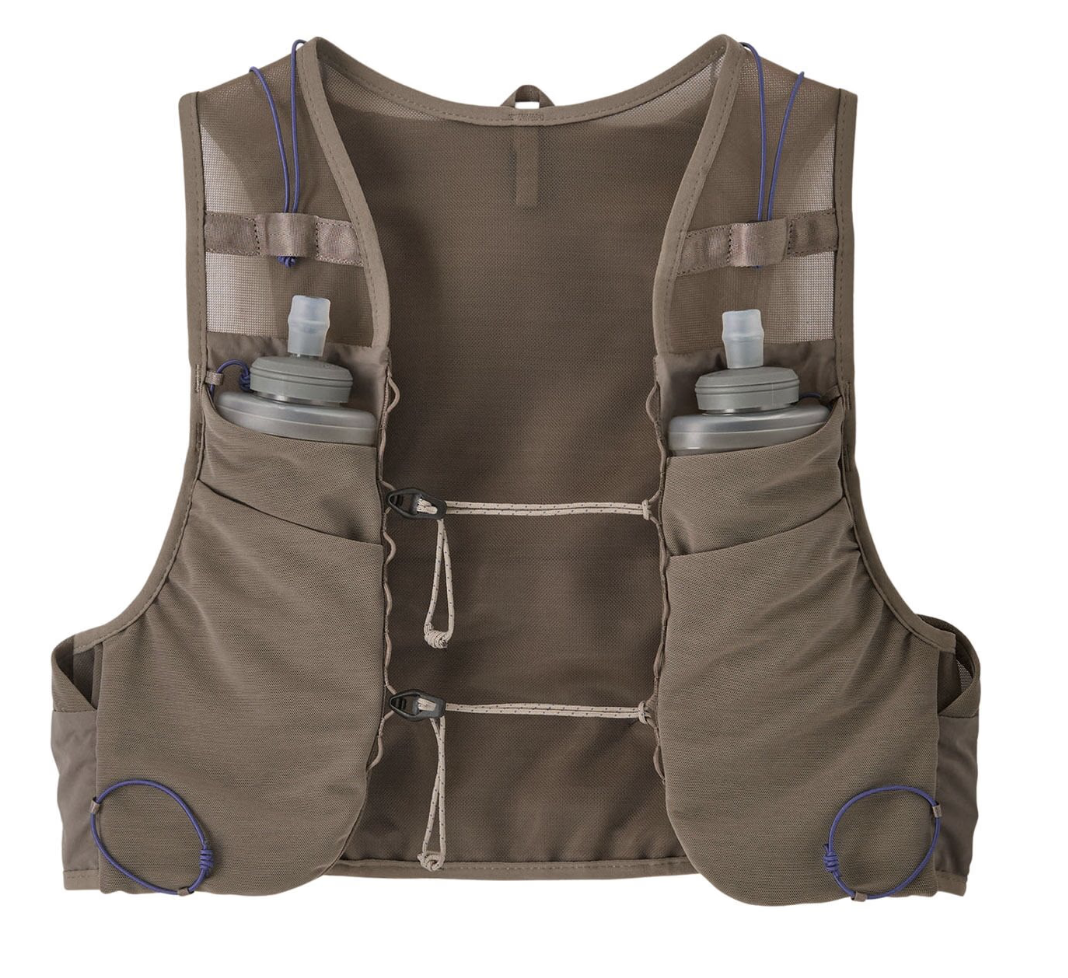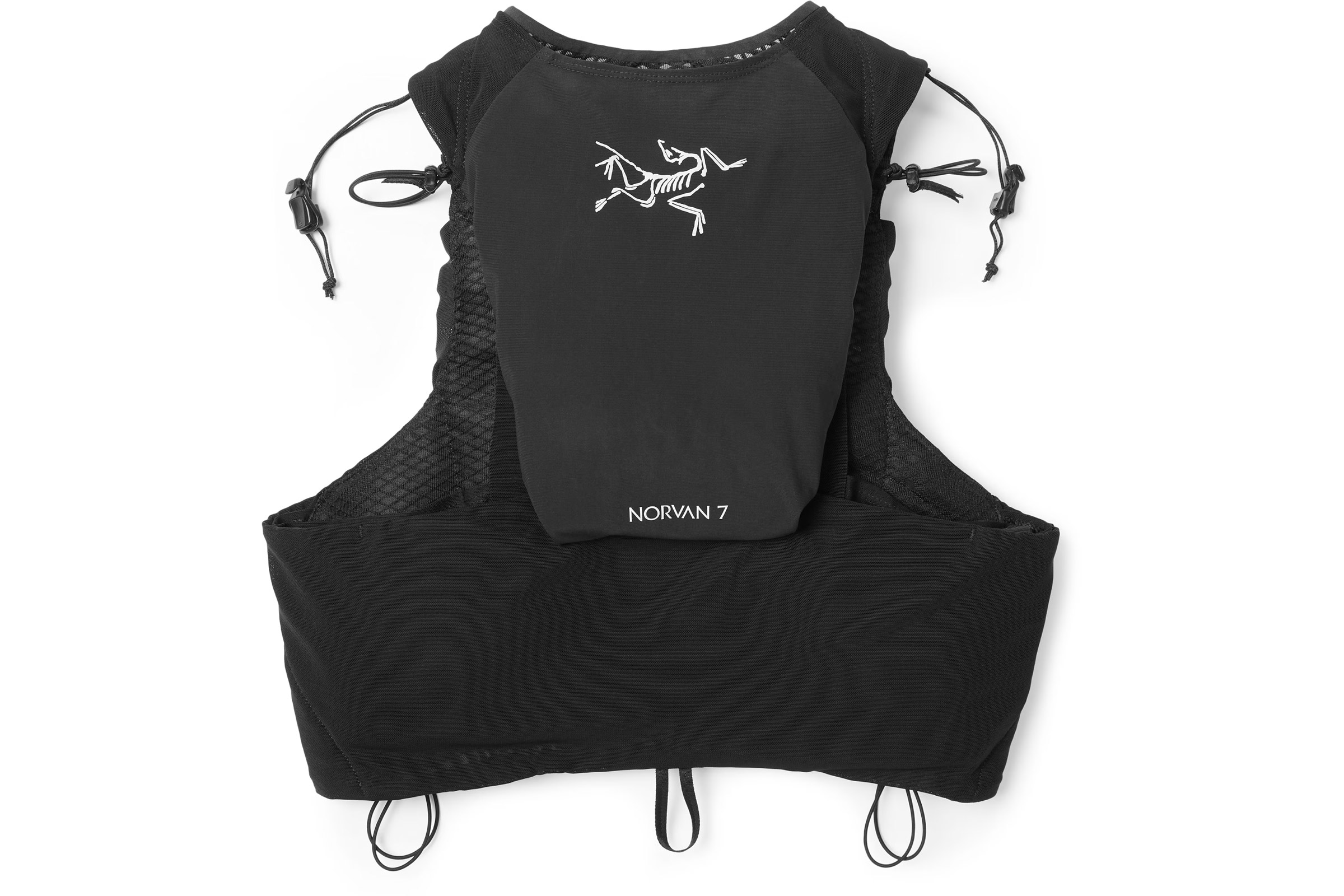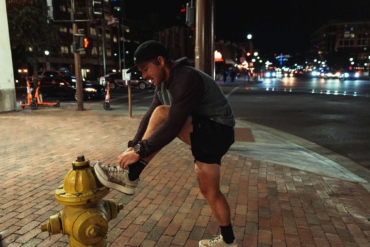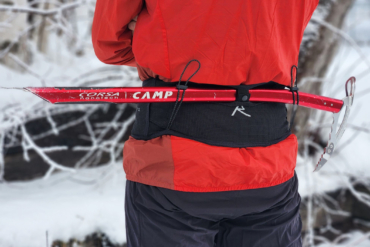Runners today are spoiled by choice when it comes to hydration vests. Whether you call them running hydration vests, trail running packs, or running hydration systems, the goal is the same: stay fueled and hydrated without breaking stride. What used to be niche gear has become an essential part of long-distance training with designs that prioritize comfort, reduce bounce, and keep essentials close at hand. The best running vests now feel more like an extension of your body than extra weight on your shoulders.
If you’re looking for one pack to do it all, consider the redesigned Salomon Adv Skin 12 Hydration Vest, a longtime favorite that’s been fine-tuned yet again. A budget-friendly pick is the Decathlon Kiprun Essential Trail 5L Running Vest, which delivers impressive performance at a wallet-friendly price.
We tested these alongside a wide range of competitors on mountain trails, desert routes, and high-altitude terrain, focusing on comfort, capacity, fit, and ease of use. No vest will work perfectly for every runner, but this guide offers options that fit different styles, budgets, and goals.
Editor’s Note: We updated this guide on December 4, 2025, adding a trifecta of new running vests including the Ultimate Direction Race Vest 6.0, Camelbak Apex Pro Vest, and Nathan Hypernight Quickstart 3.0 4L. We also added a new FAQ at the bottom, explaining the difference (if any) between a running hydration vest and hydration pack.
The Best Running Vest & Packs of 2025-2026
Salomon Adv Skin 12
-
Fit and Comfort
9.5
-
Hydration Performance
9.0
-
Storage and Organization
9.0
-
Weight and Packability
9.4
- Gear capacity: 12 L
- Weight: 8.7 oz. / 8.3 oz. for the women's version
- Materials: Polyamide, elastane, polyethylene, polyester
- Best for: All-day mountain runs, hiking
Pros
- Extremely comfortable, snug fit
- Zero bounce while running
- Solid closure system
- Pockets exactly where they're needed
Cons
- Removed storage features
Decathlon Kiprun Essential 5L Trail Running Vest
-
Comfort and Fit
7.1
-
Hydration Performance
7.5
-
Storage and Organization
7.9
-
Weight and Packability
7.0
- Gear Capacity: 5L
- Weight: N/A
- Materials: Polyester, elastane, and polyurethane
- Best for: Short Runs, Beginner Runners
Pros
- Outstanding value for the money
- Comes with a hydration bladder
- Organizationally smart
Cons
- Runs very hot
Ultimate Direction Race Vest 6L
-
Fit and Comfort
8.8
-
Hydration Performance
8.5
-
Storage and Organization
8.0
-
Weight and Packability
8.5
- Gear capacity: 6 L
- Weight: 6.16 oz.
- Materials: Nylon, elastane, polyester
- Best for: Short to medium runs, race day
Pros
- Super lightweight and minimal profile
- Decent storage capacity, especially considering its weight
- Snug, no-bounce fit
Cons
- Back zippered pocket could be larger
Nathan HyperNight QuickStart 3.0 4L
-
Fit and Comfort
7.8
-
Hydration Performance
8.5
-
Storage and Organization
7.3
-
Weight and Packability
7.0
- Gear Capacity: 4 L
- Weight: 12.4 oz. with bladder
- Materials: Polyester
- Best for: Night runs, short to medium trail runs or road runs
Pros
- 360-degree reflective detailing provides awesome visibility in low-light conditions
- Reasonable price, especially considering it comes with a 1.5 L reservoir
- Doesn't chafe on longer runs
Cons
- Minimal storage capacity for winter gear
- Still on the heavy side considering its minimal storage
Camelbak Apex Pro Run Vest
-
Fit and Comfort
8.2
-
Hydration Performance
7.9
-
Storage and Organization
8.4
-
Weight and Packability
7.5
- Gear capacity: 11 L
- Weight: 13.8 oz.
- Materials: Nylon, spandex
- Best for: Long trail runs, Ultra distances, hefty days in the mountains
Pros
- Quite durable for rugged adventures
- Tons of storage for long days on the trail
- Built-in RECCO for added safety
Cons
- Heavier than other vests thanks to its size
- Pricey
Nathan Sports Laser Light Pack
-
Fit and Comfort
6.7
-
Hydration Performance
7.5
-
Storage and Organization
6.4
-
Weight and Packability
7.0
- Gear capacity: 3 L
- Weight: 12.4 oz.
- Materials: Polyester
- Best for: Staying visible while running at night on busy roads or trails
Pros
- 6-lumen light thread affords stellar visibility in the dark
- Easy on/off switch with three different modes
- Lightweight for having lights involved in the design
- Comfortable, breathable mesh back panel
- IPX4 water resistance
Cons
- Low gear capacity
- Not the easiest to adjust on the go
- Not many different storage options
Honorable Mentions: Other Good Running Hydration Packs
-
Fit and Comfort
7.9
-
Hydration Performance
7.5
-
Storage and Organization
7.2
-
Weight and Packability
7.9
- Gear capacity: 4 L
- Weight: 6.9 oz (without bladder)
- Materials: 100% recycled polyester wiht mesh back pancels
- Best for: Long days with minimal storage needs
Pros
- Effective stash pockets
- Lightweight fit
- Great trekking pole carrying options
Cons
- No zippered pockets on front
- Small storage capacity
-
Fit and Comfort
8.0
-
Hydration Performance
7.5
-
Storage and Organization
7.5
-
Weight and Packability
7.3
- Gear capacity: 7 L
- Weight: 13 oz.
- Materials: Nylon, polyester
- Best for: Going light and fast in hot temps
Pros
- Extremely breathable
- Chafe-resistant materials
- Solid storage options
- Great adjustable sizing system
Cons
- Slightly heavier than previous iterations
- A bit pricey
-
Fit and Comfort
7.5
-
Hydration Performance
7.8
-
Storage and Organization
7.3
-
Weight and Packability
7.0
- Gear capacity: 1.5 L (M/L)
- Weight: 10 oz.
- Materials: Recycled nylon stretch mesh
- Best for: A unisex fit, hot pavement runs, everyday training
Pros
- Thoughtful pocket layout
- Comfortable, no-bounce fit
Cons
- On the heavy side
-
Fit and Comfort
6.9
-
Hydration Performance
7.5
-
Storage and Organization
6.8
-
Weight and Packability
7.3
- Gear capacity: 7 L
- Weight: 7.2 oz. (with accessories)
- Materials: Nylon, elastane
- Best for: Easy nutrition access and loaded-down mountain runs
Pros
- Easy access to fuel and hydration
- Fits well when loaded down
- Good ventilation
Cons
- Tends to bounce when not fully packed
- Lack of zippered pockets — only one for securing keys
Running Vest and Hydration Pack Comparison Chart
| Hydration packs | Price | capacity | Weight | Best for |
| Salomon Adv Skin 12 Hydration Vest | $165 | 12 L | 8.7 oz/ 8.3 oz. | All-day mountain runs, hiking |
| Decathlon Kiprun Essential 5L Trail Running Vest | $55 | 5 L | N/A | Short runs, beginner runners |
| Ultimate Direction Race Vest 6.0 | $155 | 6 L | 6.2 oz. | Race day, short to medium runs |
| Nathan Hypernight QuickStart 3.0 4L | $110 | 4 L | 12.4 oz. | Short to medium runs, night runs |
| Camelbak Apex Pro Vest | $198 | 11 L | 13.8 oz. | Long trail runs, ultra distances |
| Nathan Laser Light Pack | $120 | 3 L | 12.4 oz. | Staying visible while running at night on busy roads or trails |
| Patagonia Slope Runner Vest | $160 | 3 L | 6.2 oz | Ultralight outings and everyday runs |
| Nathan VaporAir 3.0 7L | $160 | 7 L | 13 oz. | Going light and fast in hot temps |
| Osprey Duro 1.5 Hydration Vest | $120 | 1.5 L | 10 oz. | A unisex fit, hot pavement runs, everyday training |
| Arc’teryx Norvan 7 Hydration Vest | $160 | 7 L | 7.2 oz. | Easy nutrition access and loaded-down mountain runs |
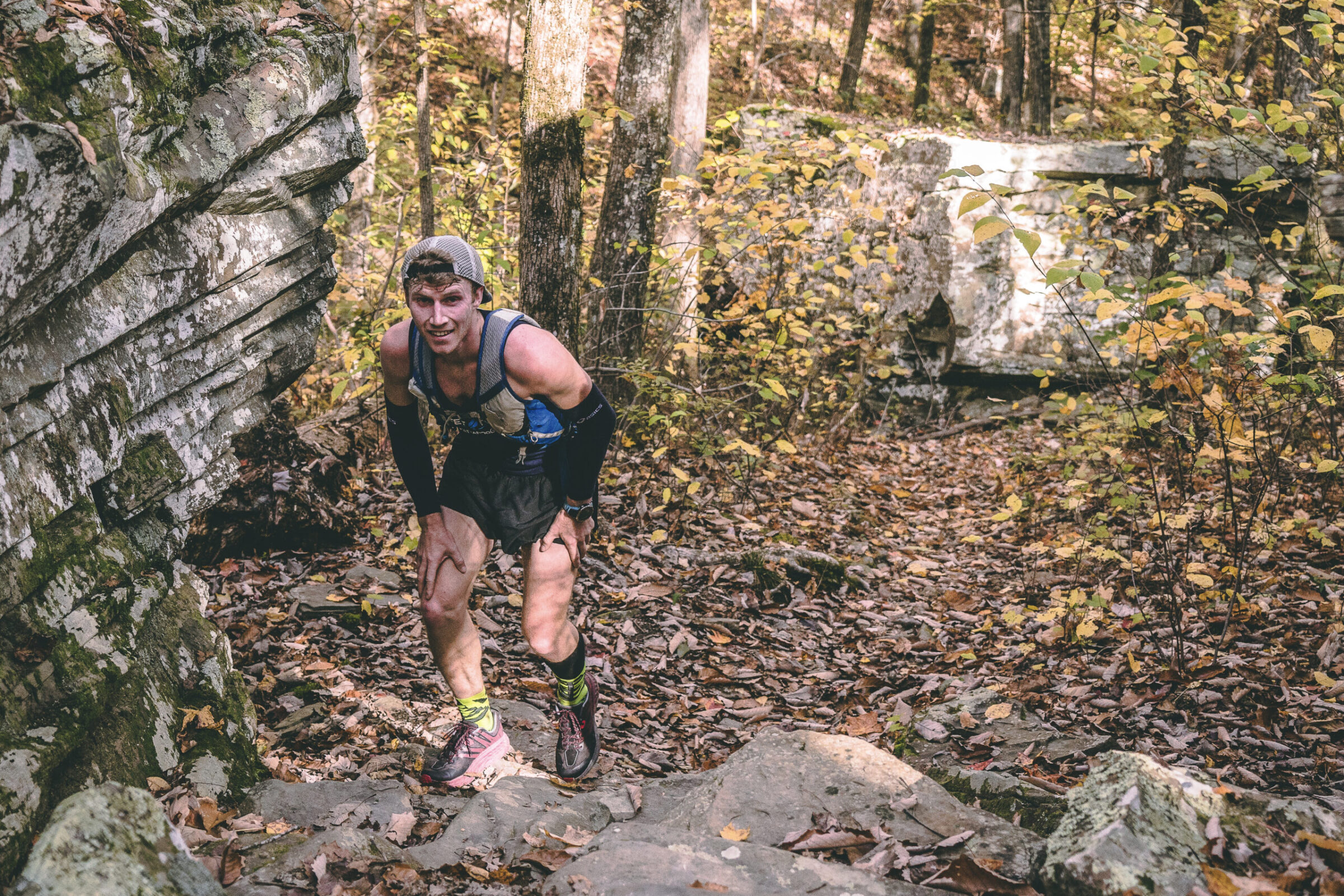
How We Tested Hydration Packs
Our Expert Testers
Heather Balogh Rochfort is the most recent author of this guide and a runner for the last 20 years. Born in Colorado and currently living in the Rocky Mountains outside of Aspen, Balogh Rochfort is a former ultrarunner who now enjoys shorter distances with a preference for backcountry adventures and ridgeline escapades. She’ll occasionally eat up some pavement if the dog really, really needs it.
Chris Carter is an avid ultra runner and is coming out of a season of constant competing in trail races along the East Coast. He can’t quite find the gumption to get into road running, but is a trail hog through and through.
Matthew Medendorp is a trail runner constantly looking for an excuse to venture off the tarmac. He cut his trail running teeth while living in Flagstaff, run-commuting and exploring the high alpine desert’s steep and dusty trails. These days, you can find him in the Midwest, grinding out weekly miles over gravel and behind a running stroller (a Thule Urban Glide 2 Double, since this is GearJunkie) and diligently sneaking in pre-dawn trail miles.
Our Testing Process
We tested a variety of vests and packs while running a variety of terrain, ranging from the sandstone-laden deserts of southern Utah to the rugged ridgelines of the Elk in Central Colorado. Our testers have bushwhacked through Gambel oak, scrambled up peaks, and run smooth single track to test out the capabilities of these vests and packs.
We’ve tested every feature and put these packs and vests through their paces. The fabric has been stretched and stained, every pocket has been tried out, and the organizational systems explored. We’ve learned things about these packs and vests that the manufacturers don’t even advertise, and we’re doing our best to convey everything we’ve learned to you, whether this is your first running vest, or you’ve worn your last one to pieces.
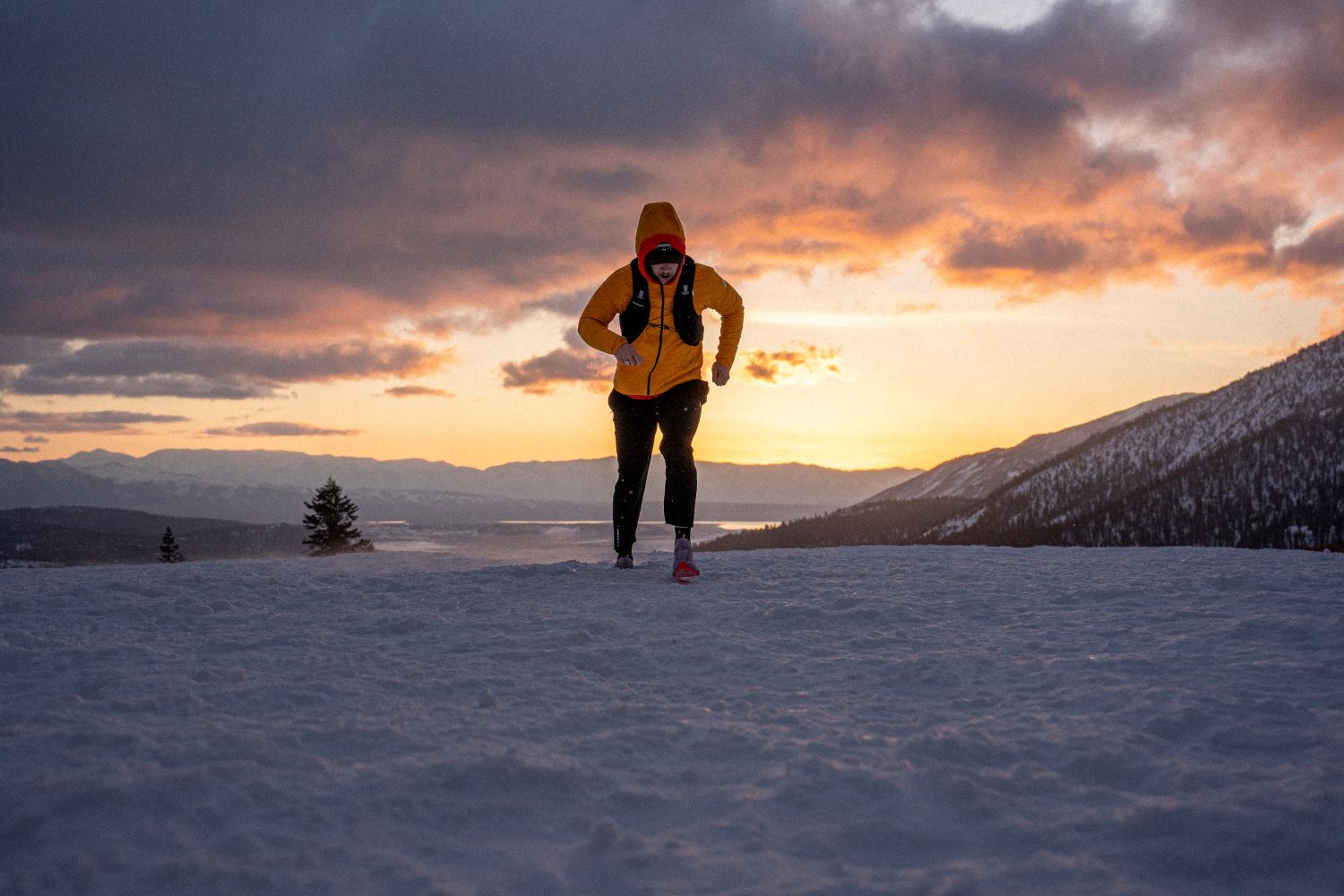
Buyers Guide: How to Choose a Hydration Pack for Running
Running packs and vests come in all shapes and sizes. It’s important to consider what kinds of runs or adventures you plan to use your pack on when choosing the right one for you.
If you typically run a few miles a week, a recreational vest will be plenty. But if you have race ambitions, you may want to choose something more technical and geared toward performance. If you want to keep your gear closet slimmed down and like multipurpose gear, a hydration pack might be better for use while hiking, running, and even on overnight trips.
Read on to learn more about what to consider while choosing a running vest or pack.
Types of Running Vests
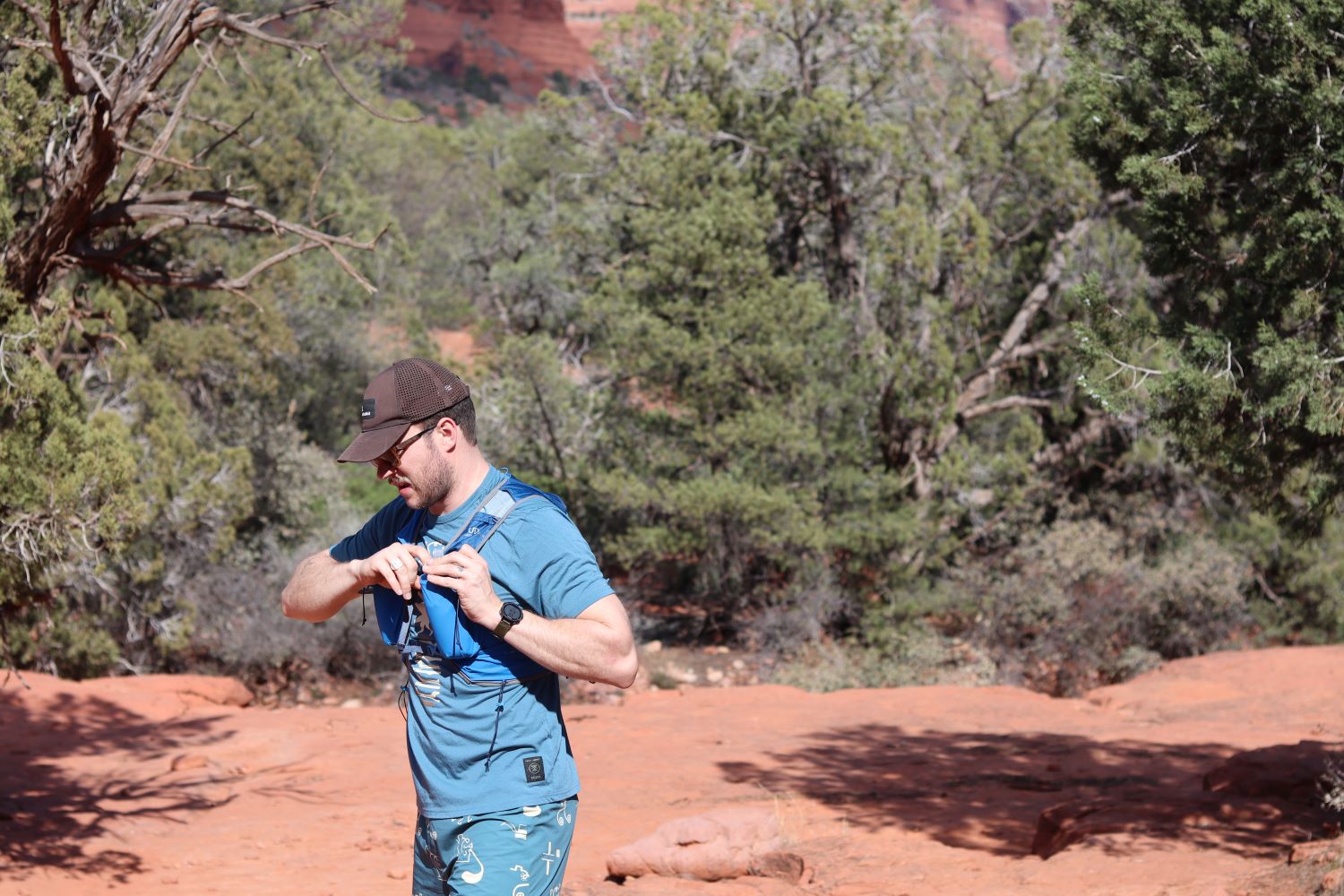
Recreational
Recreational running vests are more affordable than more technical options. That makes them a great first pick for someone who has never used a running vest before and wants to try one out.
Recreational running vests like the Nathan Hypernight Quickstart 3.0 4L vest typically hold 1-2 L of water, enough for a 1-2 hour run or a race with lots of aid stations. They might have one main compartment and a few additional places to stash snacks, phones, and other necessities. But they’re not going to have all the bells and whistles of a more performance-oriented pack.
Performance
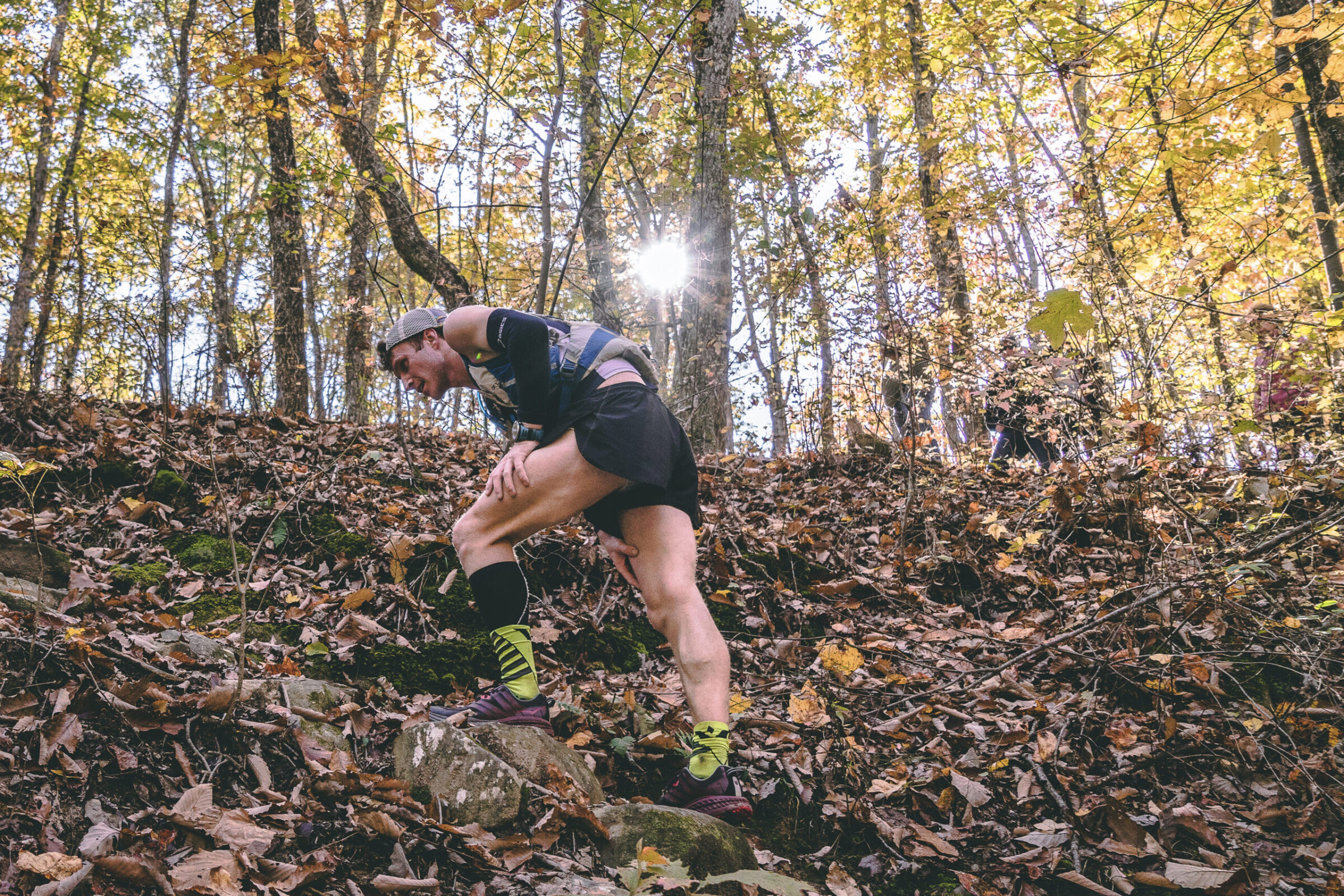
Running vests can look like a lot of different things. But they are generally oriented towards all-day runs, long trail races, ultra marathons, and technical trails.
Performance running vests like the Ultimate Direction Race Vest 6.0 typically use higher-quality materials which can make them more comfortable over longer periods of time. They also have many more features and ways to organize your gear, such as more pockets, pole and/or ice axe attachments, and unique ways to adjust the fit.
These vests can run a bit more on the expensive side, but are important elements of an ultramarathon kit, and are built to boost comfort and keep you hydrated in rough, remote environments. They are designed to reduce chafing over the long run, and be worn all day (and all night on occasion), without wearing the athlete down.
Fastpacking

Fastpacking is distance trail running and backpacking at the same time. You’re running or hiking quickly, and while going light is a necessity, you still need enough gear to be safe and comfortable (enough).
For fastpacking, you need a pack that can move with you for long periods of time, but also carry enough gear for multiple days. That’s hard to come by, as many backpacks designed for day hiking are heavy and don’t have the features to carry the gear you need, but backpacking backpacks are far too bulky.
So fastpacking running vests and packs have emerged that walk the line between running vest and daypack. They have enough capacity to fit overnight gear but still fit close enough to the body that it’s not distracting while running.
Bottles vs. Reservoirs
Different types of hydration packs and running vests have different ways to carry water. The amount of water you want to carry will depend on how far you are going. For a 1-2-hour run, you will probably only need ~1 L of water. Whereas if you’re out all day, you might want up to 3-4 L of water throughout the day. Most running vests can hold up to 3 L of water — a 2 L reservoir and two 500 mL flasks.
Most running vests and hydration packs have space for a hydration reservoir in the back. This looks like a sleeve to slip a reservoir into. The best options have a way to hold up the reservoir so that while you’re drinking from it, it doesn’t slip down in the sleeve.

Some of the options on this list like the Decathlon Kiprun Essential 5L trail running vest come with reservoirs, while others do not, like the Camelbak Apex Pro Vest. That’s something to consider before purchasing. Also, consider the size of the reservoir. Most running vests and packs can fit a 1-2 L reservoir.
Some running vests also have pockets for flasks in the front. Many of them also come with flasks, which is something to consider when choosing a running vest. When flasks are positioned properly, you can drink while on the move, which is key for any sort of running hydration.
Flasks can also have a lighter weight than reservoirs. However, some tend to fall down or are hard to reach without a lot of work while on the move. Look for elastics to hold flasks in position even when they’re partially empty. Flasks also tend to be specific fits for each brand, so don’t plan on using a Balck Diamond flasks for an Arc’teryx vest, or vice versa.
Many runners prefer one hydration method or the other, while others use both. However you choose to hydrate, you just need to make sure to bring enough water for your run.
Capacity: Water & Gear
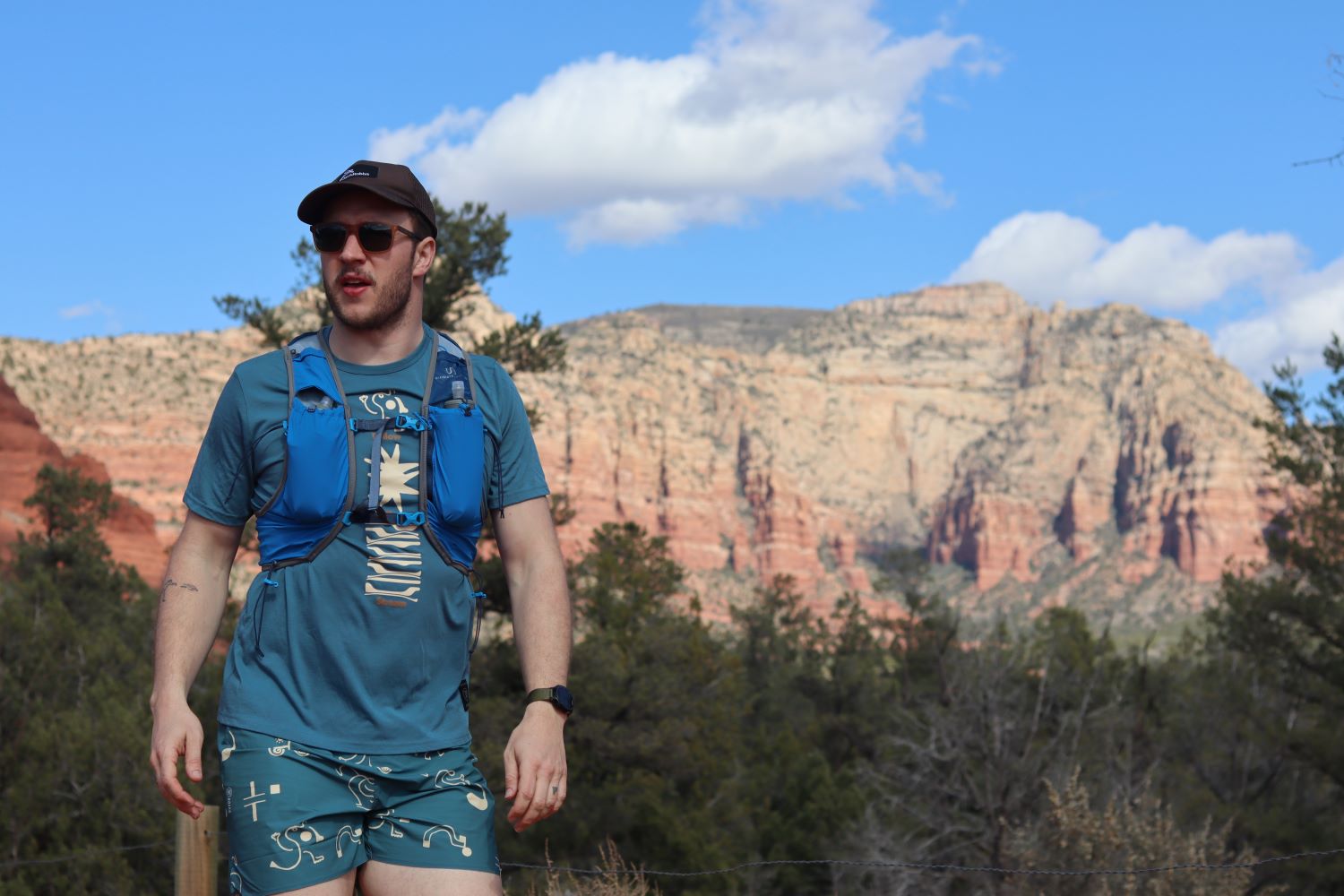
How much capacity you need will depend on what your runs typically look like. Someone whose average run is a 5-mile road run will have different needs than someone whose average run is a 20-mile mountain run.
Running vests and hydration packs come with anywhere between 2 L and 20 L of storage space, with packs like the Patagonia Slope Runner weighing in on the smaller side at 3 L. That typically describes the size of the main compartment, however many have lots of other pockets and features to stash gear. Think about what you might want to bring on most runs, and find a pack or vest that fits that amount of stuff.
If we’re going for a trail run, we usually prefer to bring at least one layer, snacks, and up to 3 L of water. On mountain runs where the weather is variable, we may bring two layers or other emergency gear. To fit all that, we’ll need at least a 5 L pack (like the Arc’Teryx Norvan 7 at 7 L). Even better, a10-12 L pack like the Salomon Adv Skin 12 is very comfortable.
When thinking about how much water you need, consider if you will have any opportunities to refill. If you’re running a race, how many aid stations are there? How long is the furthest distance between them? It’s not worth bringing too much more water than you need, since that will just weigh you down. However, it’s a fine line to run since water is a necessity while on the move.
If you’re in the mountains, are there any opportunities to fill up water from natural sources? Just make sure to bring a water filter or some way to treat water if so.
Sizing

Getting the right fit is key for any piece of gear, but especially for a running vest. When possible, head to your local running store and ask for a fitting. For online shopping, take the time to measure yourself and refer to sizing charts.
Running vests should fit snuggly, without any bounce. You want it to feel more like a piece of clothing than a backpack. Ideally, you shouldn’t feel it move when you’re running. Some vests have elastic toggles to help customize the fit or accommodate layers while others have minimal adjustment points. Honing in on the right fit is key for a good experience.
Organizational Features
Extra features can make the difference between an OK vest and an awesome one. There are so many additional organizational features on different running vests. Here are a few we see a lot:
Trekking pole attachments: If you like running with poles, it’s great to have a way to stash them if you get tired of using them, or get to a section of trail you don’t need them.
Zippered pockets: Front zippered pockets are useful for phones so they don’t fall out of stretch pockets (it’s happened to one of our testers!).

Stretchy pockets: Stretch pockets of any size are great for not taking up space unless you need them to. Stretch pockets allow you to fit larger items than the space allows, and ensure that the item doesn’t fall out if there isn’t a closure. Some of our favorite running vests use stretchy material on the pockets and compartments.
Ice axe attachment: Some running vests and packs have ways to attach ice axes which can be useful if you like to go fast and light while mountaineering. Or if you like to run during seasons when there is still snow/ice in the mountains, lightweight ice axes can be good for safety (just know how to use them).
Compression straps: Compression straps can help you fit even more gear on your pack or vest. It’s an especially good way to carry extra layers that don’t fit in your pack or can be used to carry trekking poles if there isn’t another option. Compression straps are versatile and useful in a variety of ways while running.
Whatever pack you end up choosing, remember the goal is to get out and run. Use a vest to maximize comfort and hydration, and enjoy your time on the trail.
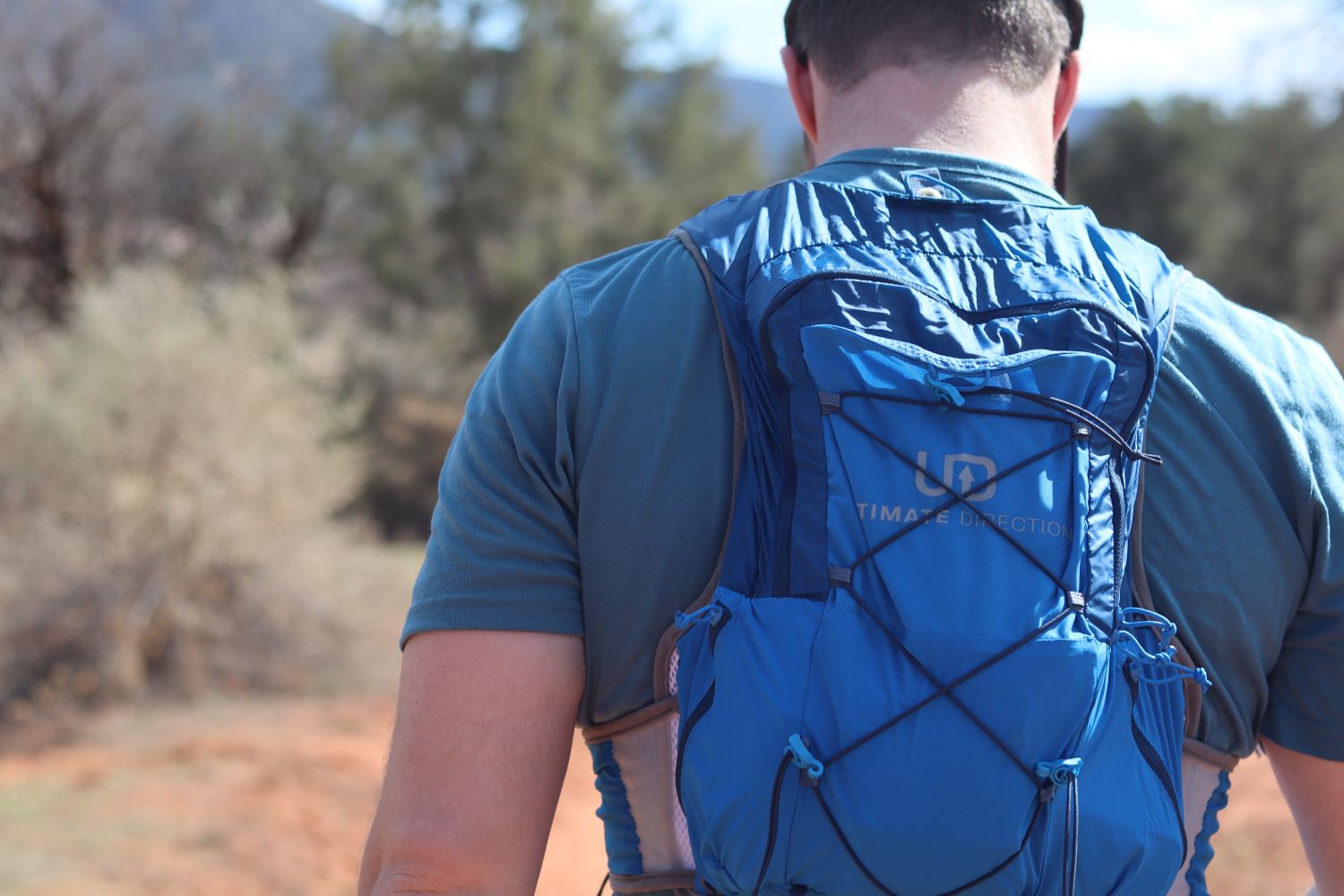
Breathability
When you’re out on runs it’s important to wear clothes and use gear that breathes well. Staying dry, or drying quickly, can be the difference between comfort and hypothermia, especially in cold months or cold climates. And in the warm months, it can make the difference between a sluggish run and a feel-good run.
Many running vests are made out of material that allows them to wick sweat or dry off quickly. Mesh materials can vent heat and keep you cooler. Or some vests and packs use ventilation to keep you cool while on the move.
It’s important to consider how well a running vest or pack breathes, especially if you know you sweat a lot.
Comfort

The ideal running vest is not distracting while on a run. If you’re trying on running vests, add some weight to them (water, layers, etc) and run or bounce up and down to mimic running. See if you notice the running vest. If you do, it will probably distract you, or even worse, chafe while on a long run.
Like all clothing and gear, the perfect running vest depends on your body shape, and your needs. There is no one “most comfortable” vest, since what fits our testers well might not fit your body as well. But look for something that fits tightly, with no bouncing or rubbing.
Try and go for softer materials, padding, and adjustability. These are all things that will help you be more comfortable, and thus run better, while out on the trail.
Visibility
It’s important to stand out when running on the trail or road — primarily in low-vis scenarios or after dark. During late-night dashes and early-morning jaunts along busy roads or mountain biking trails, lights and/or reflective strips are a must.
If your routine frequently puts you in low-light situations, make sure you grab a running vest with ample visibility. While many vests on this list have reflective logos/details, don’t rely on just those when running at night. Clip-on lights and light belts can help too.
Don’t want to worry about the hassle of dealing with dangling lights and extra accessories? Snag a vest like Nathan’s unique Laser Light Pack, which has a 6-lumen light strip that winds its way throughout the vest, affording on-demand visibility when the sun goes to bed.

Price & Value
Budget
Running hydration packs and vests can vary wildly in price. You can find them for anywhere from $50 to well over $200. Often, you’re trading thoughtful design and durability for low prices, but there are still some gems to be found in the sub-$100 range.
Our best bargain option, the Nathan Hypernight Quickstart 3.0 4L ($110), is a vest that offers 1.5 L of water storage, enough room to store several layers when the weather gets warm, and a handy tube hook that keeps the hose from swinging around while you run.
Mid-Tier
Packs in the middle of the price range typically cost anywhere from $100 to $150. In this category, you’ll find more storage, durable materials, and a few more bells and whistles than you’ll find in bargain packs and vests. The Osprey Duro 1.5 Hydration Vest ($120) is a sleek pack that carries 1 L of water, has a thoughtful array of easily accessible pockets, and offers a no-bounce fit.
Premium
If you want a pack that’s loaded with features, be prepared to shell out $150 or more. Our top pick, the Salomon Adv Skin 12, rings in at $165 but it’s easy to see where every dollar went. Most importantly, there is almost zero bounce while running, thanks to the various adjustment points and suspension system. The Camelbak Apex Pro ($198) is also on the higher end, but it comes with tons of space and a burly design built for hours in the backcountry.
Frequently Asked Questions
A hydration vest sits snug against your torso, almost like a piece of clothing. It usually carries soft flasks on the chest and sometimes a small bladder in the back. Vests are lightweight, minimize bounce, and provide quick access to snacks, phone, and gear while running. They’re the top choice for trail runners and ultramarathoners who need comfort and efficiency on the move.
A hydration pack fits more like a small backpack, with shoulder straps (and often a hip belt) to support a larger bladder and more gear. Packs are better for long training days, hiking, or multisport use where you want extra storage and don’t mind a looser fit.
Neither is strictly better—it depends on your goals. If running comfort is your priority, go with a vest. If you need maximum capacity and versatility beyond running, a pack may suit you better.
In this guide, the Decathlon Kiprun Essential 5L Trail Running Vest is a great pick for beginning runners. It isn’t as flashy or well-equipped as some of the more expensive options in our guide, but it does have everything you need including a hydration bladder and enough storage to get you out there. Plus: the price is right. Getting into trail running and long distances can often feel daunting since you have to consider the cost of shoes and socks and running shorts and fuel, so the affordability is a key element, especially since the Kiprun performs well too.
If you find yourself feeling dehydrated on your runs but don’t currently have a good solution to the problem, you may want to consider running with a hydration pack or vest.
If you are regularly running for 2 hours or longer, it is recommended to drink about 1-2 L of water during your run. A hydration pack can offer this with easy on-the-go access.
For short runs that are less than 30 minutes in length, a hydration pack likely is not necessary. However, heat and climate are always factors to consider, too. Keep in mind that running with a hydration pack won’t change your running form. As long as the pack is well-fitted, you should barely notice it there.
It depends on your distance, terrain, and personal preference. Soft flasks (usually 500 ml each) are great for shorter runs, races, and situations where you want quick access to water or electrolyte mixes. They’re easy to refill at aid stations, let you track how much you’re drinking, and reduce sloshing since the bottles shrink as you sip.
A hydration bladder (1–2.5 L) makes more sense for longer efforts, especially when water sources are scarce or you don’t want to stop as often. The downside is they’re harder to refill on the go, and you can’t easily monitor how much you’ve consumed.
Many runners use both: flasks up front for quick access and a bladder in the back for backup. The best choice comes down to how far you’re going and how you like to drink on the run.
Hydration packs are available with various reservoir capacities. Most options can carry 1-3 L of water. Choosing a hydration pack comes down to how long you plan to run while using it.
If you will be running for very long periods without stopping at water stations or sources, you will want a larger capacity hydration pack to keep you going throughout your entire run. For example, ultra-runners will likely need greater capacity packs, while shorter-duration runners may be able to get by with a smaller capacity.
Remember that the more water you put in your pack, the heavier it will be. For most runners, 2 L of water in the pack can offer a good balance between weight to carry and available water.
Most hydration packs are made to fit everybody. However, it’s a good idea to check the pack’s specs to ensure that it will work for someone with your body type and size.
A properly fitted hydration pack should not change the way you run. If you plan to participate in a race or major planned run, it’s a good idea to run several times beforehand with your pack on so you can get used to it. Then, you can make any necessary adjustments to its fit.
Make sure to organize all your gear so the weight is evenly balanced and there isn’t too much in the front or the back. Also, make sure you can access the gear you need quickly, ideally without having to take your hydration pack or vest off.
The terms running hydration vest and running hydration pack generally refer to the same type of gear. A hydration vest typically fits close to the body with front bottle storage and minimal movement, while a hydration pack may have a bit more storage and can sometimes include a rear hydration bladder. For most runners, the choice comes down to fit and volume, not terminology.

The Best Running Shoes of 2025
We tested the best running shoes of 2025 with options for every budget. Top picks include Craft, HOKA, Brooks, and more!

The Best Running Shorts of 2025
Our experts compiled a list of the best men’s running shorts available today, including options from Patagonia, Adidas, and more!


